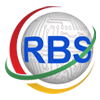5 Things You Need To Know About Cloud Security
Technology is advancing faster than the world can handle, with only the few people who truly grasp the underlying concepts of the cloud being able to understand them. Are you one of them?
The surge of connectivity in IoT is the main contributor to the grand shift towards the takeover of cloud technology. This cutting-edge technology inspires organizations to adopt a cloud TOS which ought to resolve many operational inefficiencies, drive operational efficiency, and enhance their overall performance.
Although several TOS providers tend to pitch this buzzword at every opportunity, nearly all system infrastructures evade entirely from the core cloud characteristics and components. Instead of achieving maximum ROI, which is a forefront deliverable of the cloud, they confront a surplus in expenses and experience a downturn in performance. As a result, these TOS which claim to be cloud-based foster an undermining perception of how powerful a true cloud TOS can manifest on a terminal.
Not only does the undesirable outcomes that emit from a forged cloud TOS misconstrue cloud computing, but the acute fear detesting the security of a cloud TOS illustrates the device as belligerent and detrimental. Data insecurity inherits the main deterrent against adopting a true cloud TOS. Although many sources suggest a resistance against the cloud, there are not many valid reasons justifying this proposition.
Before making a misinformed decision, it is critical to fully understand every aspect of what a true cloud TOS can offer a terminal. Outlined below, are the debunked speculations challenging data insecurity.
1. 2048-Bit Encryption
Anything connected must be supported by well-defined and well-implemented security. Therefore, a cloud TOS must provide 2048-bit encryption; the highest encryption rate available. This level of encryption is exponentially more secure than 1024-bit, setting the new standard across the Container Handling Industry. Do not settle for less.
Standardization for data must be enforced to ensure a decree of legislation is governing the continuously growing cloud computing landscape. As cloud computing expands into new fields, new standards regarding security and privacy are introduced, becoming stricter and increasingly rigid. The latest ISO/IEC 19086-4:2019 has been instituted, heeding strict conformity from all cloud service providers. This standardization also serves as guidance whereby infringement of the regulations instigates viable litigations.
3. Multi-Layered Security
A TOS operating in the cloud is essentially a SaaS running on a PaaS belonging to a cloud service provider. As opposed to the conventional on-premise enterprise TOS solution, there is a higher concentration on data security since cloud servers maintained in data centers are rigorously safeguarded and managed by professionals with strong IT expertise. These professionals are highly experienced in responding to any malfunctioning or system failures with imminence. Entrance to these warehouses also requires numerous levels of authorized clearances. The rollout of stringent compliance requirements, firewalls, policies, processes, and control activities collectively fortifies an ethical use of cloud technology to instill a safe environment respecting global privacy and data protection.
Traditionally, a terminal restricts their resources and delegates limited-to-one IT maintenance personnel to maintain the hardware and system infrastructures. As a result, this limited expertise can engender additional implications such as being incapable of detecting the issue early which prolongs the timespan to resolve the issue. Therefore, if anything, security is heightened in the instance of adopting the cloud which starkly distinguishes against the common on-premise TOS.
4. Cloud in Everyday Use
The masses of Internet-enabled devices expedite cloud use and has become an unknowingly natural practice for all Internet users. Cloud technology is prevalent in everyday operations and activities inducing greater dependence as it continues to expand across all industries. Many users entrust their private data to cloud-based software giants such as Facebook, Instagram, and Google Drive, baring the question – what is the difference?
5. Non-sensitive Data
Data processed in a TOS is predominantly non-sensitive as it primarily comprises of EDI messages providing discharge as well as load orders, and container throughput sent from shipping lines. Therefore, the terminal operator does not own any data that enters or departs from the terminal other than their KPIs, which is of very little value to external stakeholders.
When terminals face results that deviate heavily from their expectations and objectives, it is crucial to understand that it is yielded from poor decision making in implementing a forged cloud TOS. A true cloud-based TOS will offer higher revenues, lower expenses, and instill paramount security measures. Conduct research, understand the true meaning of cloud infrastructure and select the correct cloud TOS to leverage only benefits. It is time you start seeing a difference.
